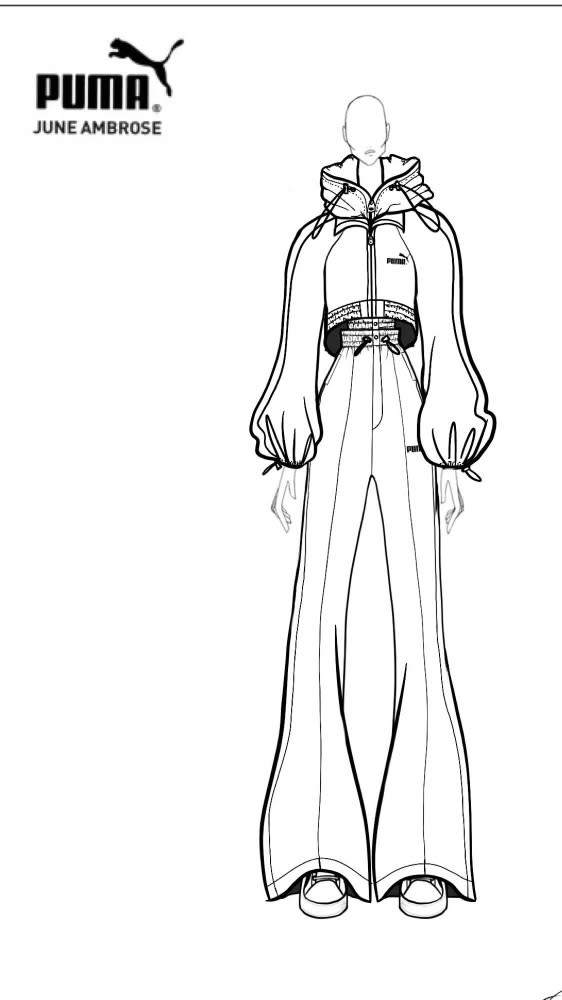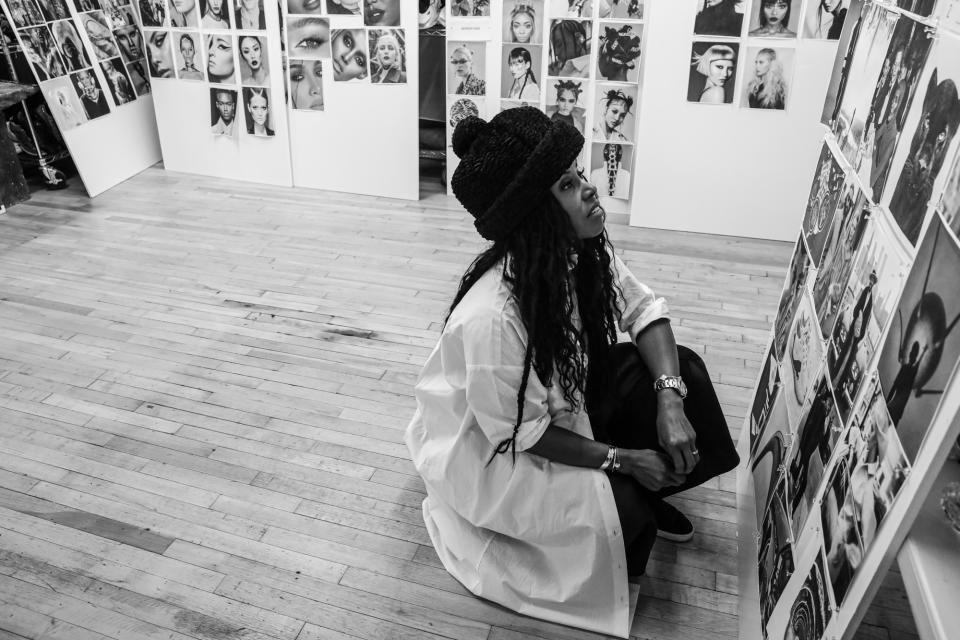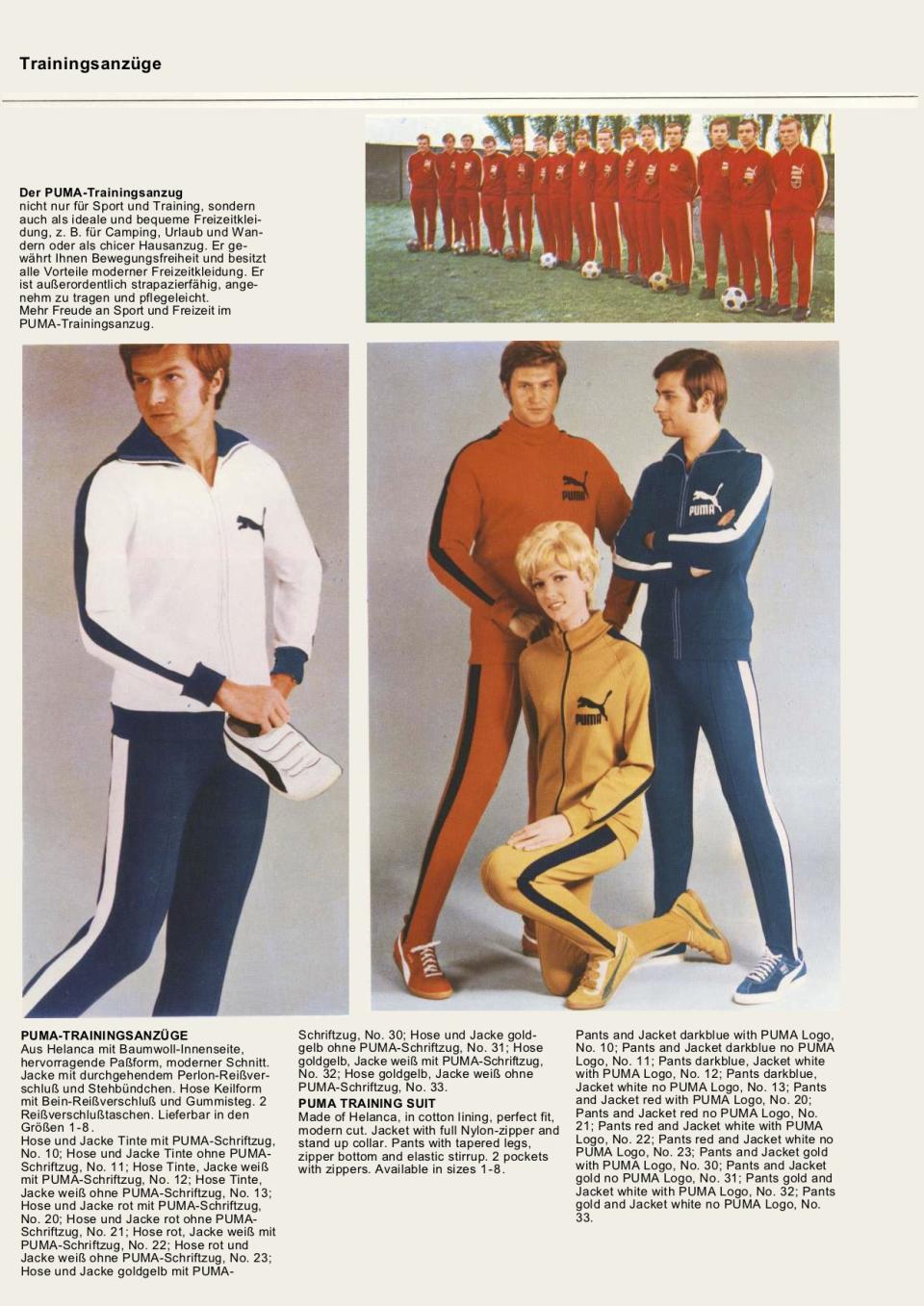Puma’s Return to NYFW Will Reference the Brand’s Past and Future

On the eve of its 75th anniversary in 2023, Puma is moving to ramp up its visibility in the U.S. by returning to New York Fashion Week.
The Herzogenaurach, Germany-based brand will present Futuregrade, an immersive runway show that will bring together past, present and future. It will feature men’s and women’s collections in a space in downtown Manhattan that it said will be “transformed by light, music and projection effects” and will feature retro pieces, upcoming collaborations, custom items and futuristic looks — all designed to highlight Puma’s expertise in sport fashion.
More from WWD
In addition to the show, Puma will offer up a digital experience that ticks off all of the boxes and will include NFTs of footwear that will be integrated into the show through digital avatars.
A key component of the show will be its focus on Puma’s signature T7 tracksuit, which helped move the brand beyond just shoes when it was introduced more than 50 years ago, bringing the formstrip and the logo of a jumping puma to apparel for the first time, and helping bring Puma out of the sports arena to the forefront of street culture.
In addition to heritage pieces, the show will unveil collaborations with Dapper Dan, Palomo Spain, AC Milan and Koche.
The show will also offer the first peek at the Puma x June Ambrose collaboration that will come out early next year. The brand named Ambrose — an award-winning costume designer, creative director and author who has styled everyone from Mariah Carey and Mary J. Blige to Alicia Keys and Jay-Z over the course of her 25-year-plus career — its creative director for women’s basketball in the fall of 2020. Ambrose, who was introduced to Puma by Jay-Z, the company’s creative director of basketball, curated the show and has been working to bring it to life.

“My life and work has been rooted in street culture and developing the relationship between urban sensibilities and industries,” she said. “When I entered the business nearly three decades ago, my mission was to influence generations of people who dream about being seen. This perspective is what I bring to Puma and it reflects my mind-set as I curate the Futuregrade show. I’m excited about the audience’s perception of how we are tapping into nostalgia and reimagining it for the future.”
To Ambrose, the show will represent more than just a collection of looks. “It’s a brand moment,” she said, adding that the event “could put us on the map with street culture.” Some 78 pieces will be showcased, many of them informed by pieces in the archive, with a focus on the T7 tracksuit.
“It’s all about the journey of the T7,” she said, adding that the silhouette will be reinterpreted with “provocative cigarette pants” or motorcycle suits of yesterday. “It’s a classic, but it can still make noise,” she said. “We need to be risk-takers and lead with trends, but in a way that won’t damage the business.”

Ambrose said when Puma’s executives noticed the “enthusiasm, energy and fun” she brought to the table — and the sell-throughs of the women’s basketball product she created — they expanded her role within the company. In addition to working on the runway show and the Puma x June Ambrose collection, she’s spearheading a collaboration with motorsport that will be unveiled in May.
As a German company, it would have been easier perhaps to hold a show during the Paris or Milan show weeks rather than New York, but Heiko Desens, global creative director of Puma, believed otherwise. “I feel in regard to fashion, New York Fashion Week is more progressive and the more open platform for this kind of project.”
The last time Puma showed in New York was in 2017 when it was working with Rihanna, a relationship that has since ended.
“This show is not led by a partner or collaboration,” Desens said. “We really wanted it to be a brand experience. We felt like we have such a great portfolio of stories to tell and we didn’t want to distract from them with a partnership moment. Of course, we’ve included some of our partner collections, but overall, it’s more about portraying the brand — where we are now and what we’re doing that we’re excited about.”
He said the team started planning the show by first poring through the company’s “amazing archive,” which he said was “the greatest source of inspiration for storytelling and for brand moments.”
He pointed to the T7 as well as the Suede, its signature sneaker, as classics that have come to define the brand. “They are ambassadors for us as a brand and will be there for the next 50 or 100 years,” he said. “They haven’t lost their sexiness at all and are still relevant with the young and cool consumers.”
So the show will highlight the relevance of these products by remixing them through the lens of fashion, streetwear and sports, he said, which is where Ambrose excels. “It was love at first sight,” he said, pointing to Ambrose’s “level of taste. It’s great to have an outside person be so involved with the brand and have a critical eye.”

Looking ahead to next year’s milestone anniversary, Desens didn’t want to give away too much about Puma’s plans, but said Super Puma, the brand’s mascot from the ’60s that has drawn interest from today’s streetwear community, will be resurrected through a partnership with the Steiff Teddy Bear Co. that will be sold in a collectors’ box, along with a sneaker and varsity jacket. There will be a “love affair around our first logo with several partners,” he said, along with signature color drops from the archives and some “flamboyant and expensive products.”
But for now, it’s the runway show that is the primary focus.
“It’s just an incredibly important moment for us for so many different reasons,” said Adam Petrick, chief brand officer of Puma. “Returning to fashion week for the first time in several years is significant because we knew we needed the right combination of factors to be present. With an emphasis on digital, a great lineup of ambassadors and an amazing creative partner in June Ambrose, the foundation and creativity for a great show are there.”
He said the brand is “coming out of a period of pretty rapid growth” over the past two years as it capitalized on the shift toward casualization spurred on by the pandemic. But as far back as 2014, he said, Puma made a “major investment to reground ourselves in sports, which was the foundation of our company.” And the show is the company’s way to connect that heritage with fashion.
“We have a chance to really balance things out nicely by showing our heritage as a brand, demonstrating our connectivity with sports, but then also bringing a relationship with the world of fashion,” he said. “What we’re endeavoring to do with this show is a signal of our intention for the future.”
In its second-quarter earnings call at the end of July, Puma reported net sales jumped 18.4 percent to more than 2 billion euros and the company is projecting growth in the midteens for the full year. But Puma is not immune to the macroeconomic pressures of rising raw material costs, inflation and political unrest.
Petrick said these are issues that are impacting all companies, but Puma needs to focus on how to differentiate itself as it navigates these potential pitfalls. “How are we going to be more clear with our messaging,” he asked. “How are we going to have the edge through another potentially turbulent period. We’ve seen this kind of moment before, maybe not on a global scale but on a regional scale. So we’re going to look at our values and core principles, which is sports first.
“Sports never goes away. It’s something humans love and need, whether it’s the competition or the fitness or just the general health aspects. It’s absolutely not recession-proof, but it’s certainly something that we can count on as continuing to be interesting to our consumer.”
In 2014, the company came up with a mantra of Forever Faster, which Petrick said opened up a conversation about the “emotional context of forever — what that means to consumers, and what it means to be a 75-year-old brand.”
“This Forever Faster mind-set is something we will lean into, and it will help us weather any storm that comes.”
Sign up for WWD's Newsletter. For the latest news, follow us on Twitter, Facebook, and Instagram.
RSVP for "A Matter of Style", a Fairchild Archive exhibition September 9-10 in New York City.

